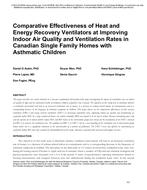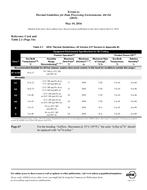The choice of an optimum opaque building envelope design depends on several factors including its appearance, life cycle cost, structural integrity, and the ability to shield the interior space from weather and noise. Residences in the United States have typically utilized wood frame walls in recent years because of the low initial cost and ease of construction. Recent emphasis on energy transfer through building envelopes and its impact on heating and cooling fuel costs has resulted in increased efforts to design more cost-effective envelopes.
Four different frame wall test sections have been installed in the second story of the Iowa State University Energy Research House. The thermal performance of each wall section has been studied in situ for a period of two years. Measurements have been made of the steadystate thermal resistances with and without framing effects, the change in resistance from year to year, and the transient heat flow in summer. Results of the study are presented here and are used as a basis to develop the life cycle cost of each construction, which can be used to determine the optimum frame wall design for a new structure.
Product Details
- Published:
- 1982
- Number of Pages:
- 16
- File Size:
- 1 file , 1.2 MB
- Product Code(s):
- D-HO-82-03-1
- Note:
- This product is unavailable in Russia, Belarus


